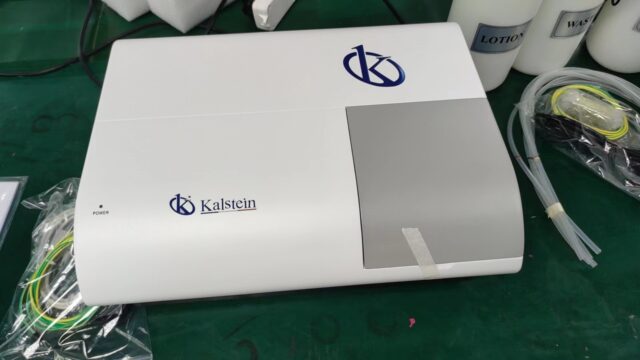A microplate reader is a specialized spectrophotometer designed to read the results of a technique used to determine the presence of specific antibodies or antigens in a sample. The technique is based on the detection of an immobilized antigen on a solid phase, by means of antibodies that, directly or indirectly, produce a reaction whose product can be read by the spectrophotometer.
This equipment is used to read the results of the tests carried out, using the ELISA technique, which has direct application in immunology and serology; it allows to confirm the presence in the body of antibodies or antigens of an infectious agent, vaccines or autoantibodies.
What is your principle of operation?
Unlike conventional spectrophotometers that allow readings in a wide range of wavelengths, the microplate reader has filters or diffraction gratings that limit the range of wavelengths to those used in the ELISA technique, which it is generally carried out with wavelengths between 400 and 750 nm. Some analyzers operate in the ultraviolet range and can perform analysis between 340 and 700 nm. The optical system used by many manufacturers uses fiber optics to carry light to the wells of the plate, where the sample under analysis is located.
The light that passes through the sample has a diameter that varies between 1 and 3 mm. A detection system receives the light energy from the sample, amplifies it, determines the absorbance and, through a reading system, converts it into data that allow the interpretation of the test result. There are also microplate readers that employ dual beam lighting systems. The ELISA test samples are placed in specially designed plates, which have a defined number of wells or vessels, in which the procedure or test is carried out.
8 column by 12 row plates are common, with a total of 96 wells. There are also plates with a greater number of wells. There are 384 wells and the current trend is to increase the number of wells, and reduce the amount of reagents and the volume of samples required. The location of the optical sensors on the microplate reader varies depending on the manufacturers. Some place them on the specimen plate, while others place them directly under the wells of the plate.
What is the advantage of its use?
A microplate reader helps minimize operating time and save costs, allowing researchers to spend more time analyzing data and generating practical knowledge.
You must bear in mind that it is a multimodal equipment, since it allows a variety of experiments to be performed and measured simultaneously. Microplate readers can make absorbance, fluorescence, and luminescence measurements. Regardless of the type of analysis, experiments on the plate reader use a standard curve to determine the experimental values. This curve uses samples of known concentration to generate a line of best fit or standard curve. Experimental values are then extrapolated to the curve or calculated using the linear regression equation.
At Kalstein we offer you innovative microplate readers, designed with the highest quality and cutting-edge technology. That is why we invite you to take a look at HERE

